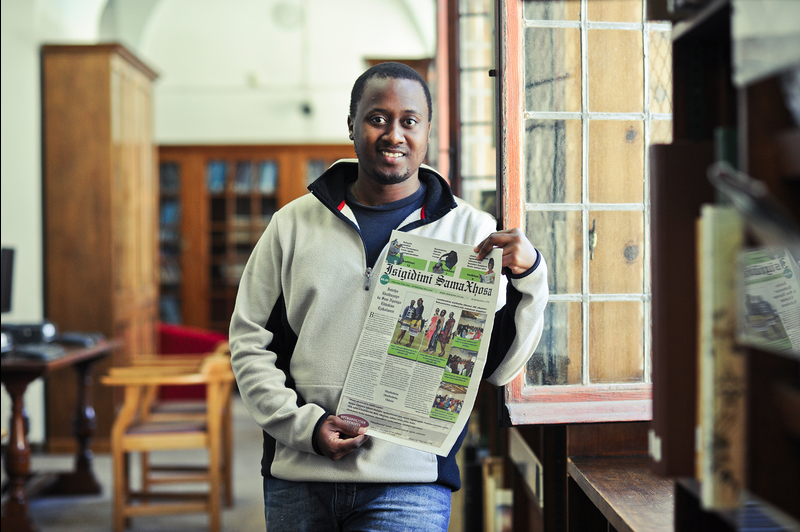Alumnus revives trailblazing Xhosa newspaper
13 May 2013
Despite having 11 official languages and scores of unofficial ones, South Africa's media landscape is dominated by English and Afrikaans-medium newspapers. Now, the resurrection of a newspaper that was last published more than a century ago aims to shake that market up.
When Isigidimi SamaXhosa was published on 1 August 2012, it heralded the revival of a newspaper that was famous in the 1870s for carrying some of the most critical political and cultural pieces by Xhosa writers at the time, says re-founding editor and UCT alumnus Unathi Kondile.
"It was the first Xhosa newspaper to have black editors, with people like John Tengo Jabavu and William Gqoba among them," says Kondile of the paper's heyday between 1871 and 1878. "After the 1877-1879 Frontier War things took a turn for the worse, as [the paper] became a Christian propaganda [tool] and many writers left, disgruntled."
The 21st-century version of Isigidimi SamaXhosa's first print run comprised 5 000 copies that were distributed to libraries in the Eastern Cape and Western Cape. After a positive reception, 1 September saw a second 12-page tabloid-size edition published, with circulation doubled. Once municipalities, schools, bookstores and government departments across the country had started to request copies, Kondile decided to revive the paper officially, printing 10 000 copies per month.
Many apeople commented on the "new way" the paper wrote isiXhosa, says Kondile, referring to its opinion pieces and critical analysis of events.
"It was a welcome move from the praise poetry and short stories that Xhosa writing has become." Isigidimi SamaXhosa has 32 volunteer contributors from across the country who assist with all aspects of producing a newspaper. The editor says that the paper won't merely translate news generated by English and Afrikaans media houses into isiXhosa.
"We would like to develop new narrative literary journalism based on what our readers would like to read," explained Kondile. "We are trying to create something bigger than a community newspaper, to create a national Xhosa newspaper - a Xhosa Mail & Guardian, so to speak - where we go in-depth with our pieces. We are the only Xhosa newspaper with national ambitions."
Sadly, spiralling costs have temporarily pulled the plug on the print run. Readers can still access the newspaper online, at Isigidimi SamaXhosa and on the newspaper's Facebook page. Being online has sparked international interest in the paper, but key distribution points were complaining about the lack of print versions, says Kondile.
A cover price of R2.50 has been mentioned as a solution.
Kondile, who holds an MA in media studies from UCT and is a senior technical officer at UCT's Michaelis School of Fine Art, sees language as a key ingredient of "genuine transformation".
"Language is access. Matters of national discourse are set according to what the English and Afrikaans media deem interesting, [so] we don't know what the public interest of the majority is, because we exclude them through language. "If any academic institution claims to be serious about redress and transformation, I believe language should be at the top of their priorities," Kondile says, adding that the university should make provisions for those whose 'disability' is their language, in the same way that the university is improving physical access to campus for wheelchair-users.
Kondile is acutely aware of the history of failure of similar ventures. "Many such newspapers fail because they are run like businesses - they focus too much on securing advertising, as well as becoming tabloid-like to attract as many readers as possible," he remarks. "The problem with this is that it does nothing to develop Xhosa journalism or new narrative literary journalism techniques."
Eventually, Kondile envisions that Isigidimi SamaXhosa will be printed weekly, produced through an academic institution where, he says, it might spark opportunities to train students in isiXhosa journalism.
 This work is licensed under a Creative Commons Attribution-NoDerivatives 4.0 International License.
This work is licensed under a Creative Commons Attribution-NoDerivatives 4.0 International License.
Please view the republishing articles page for more information.










